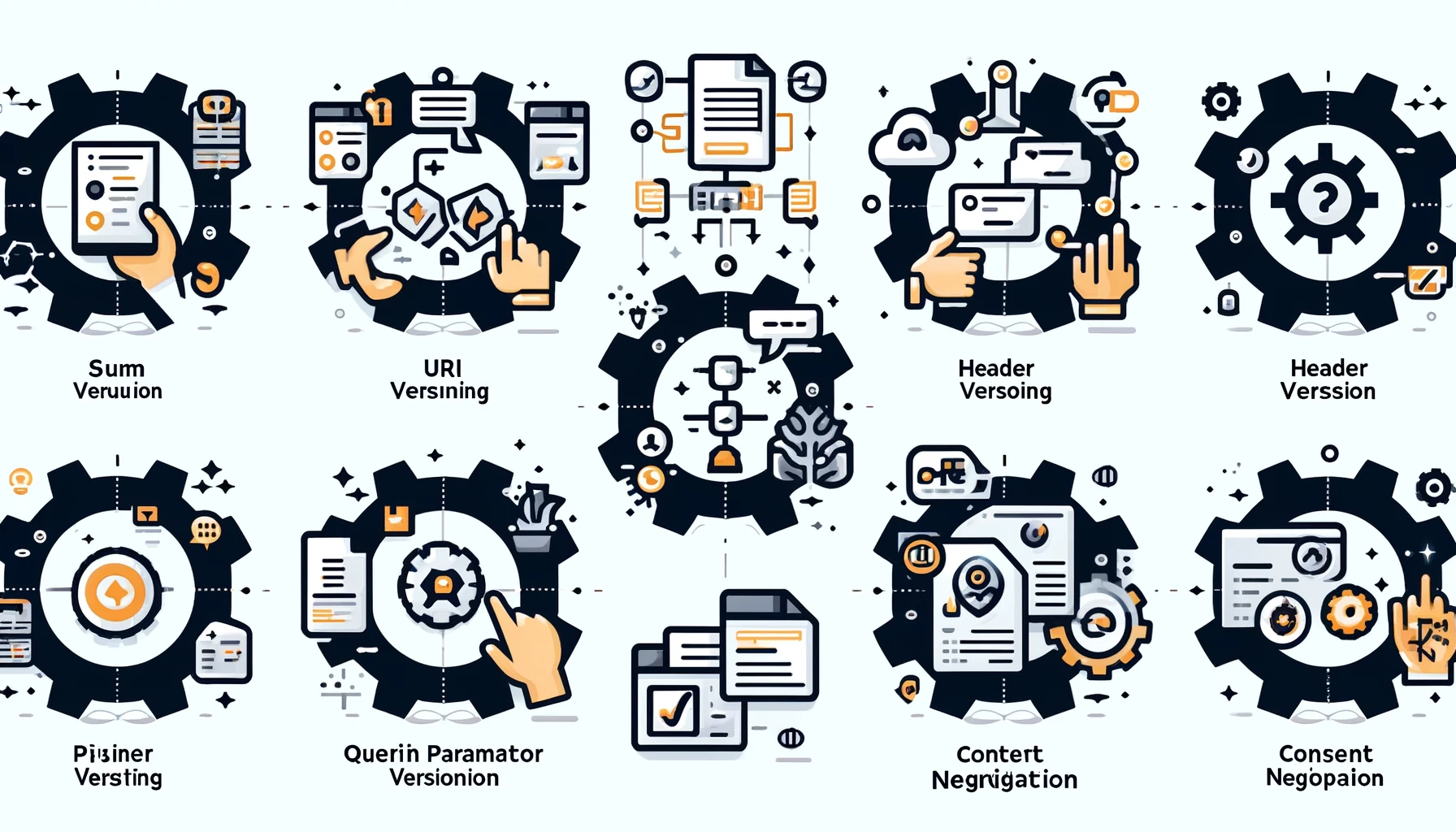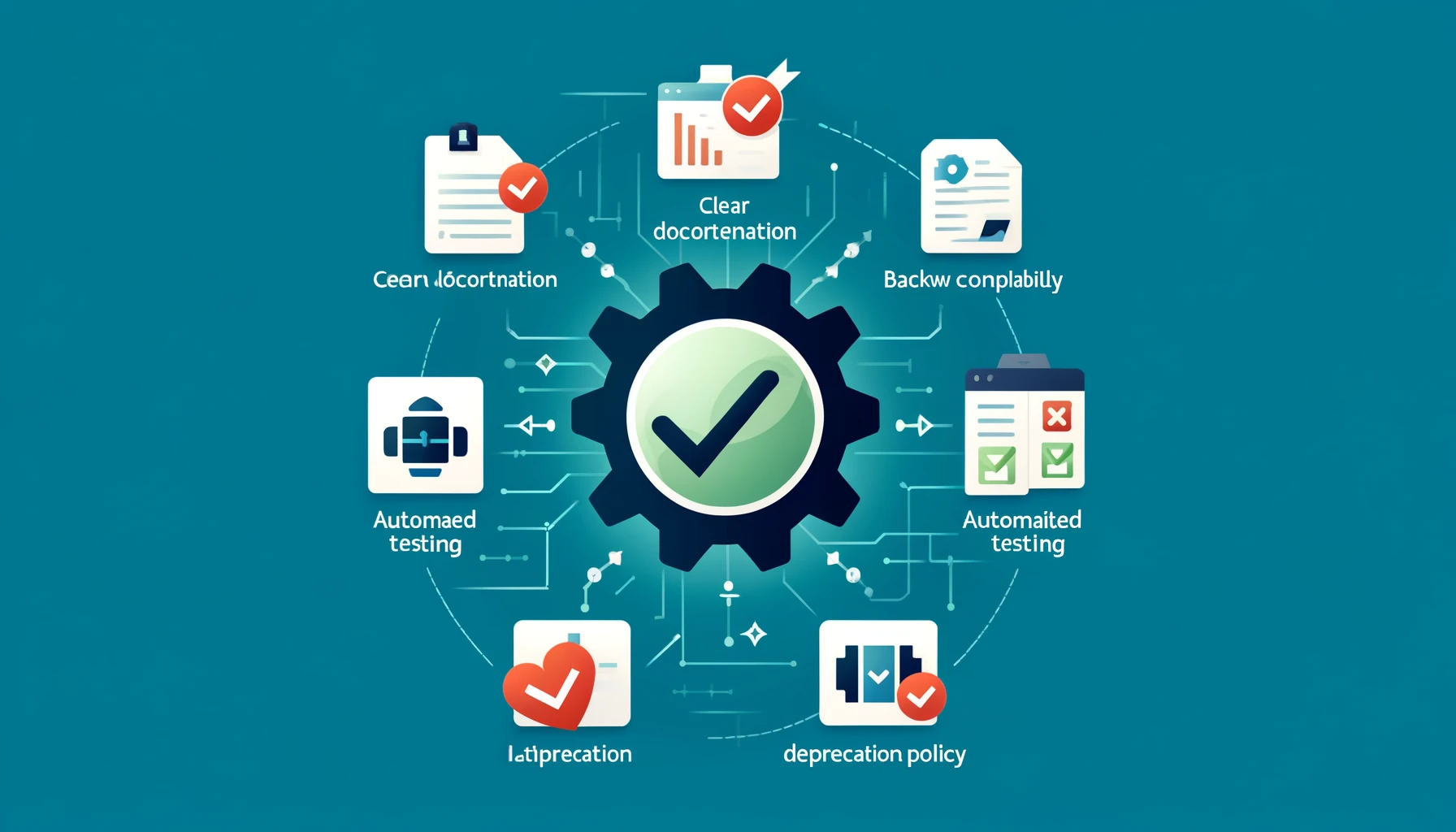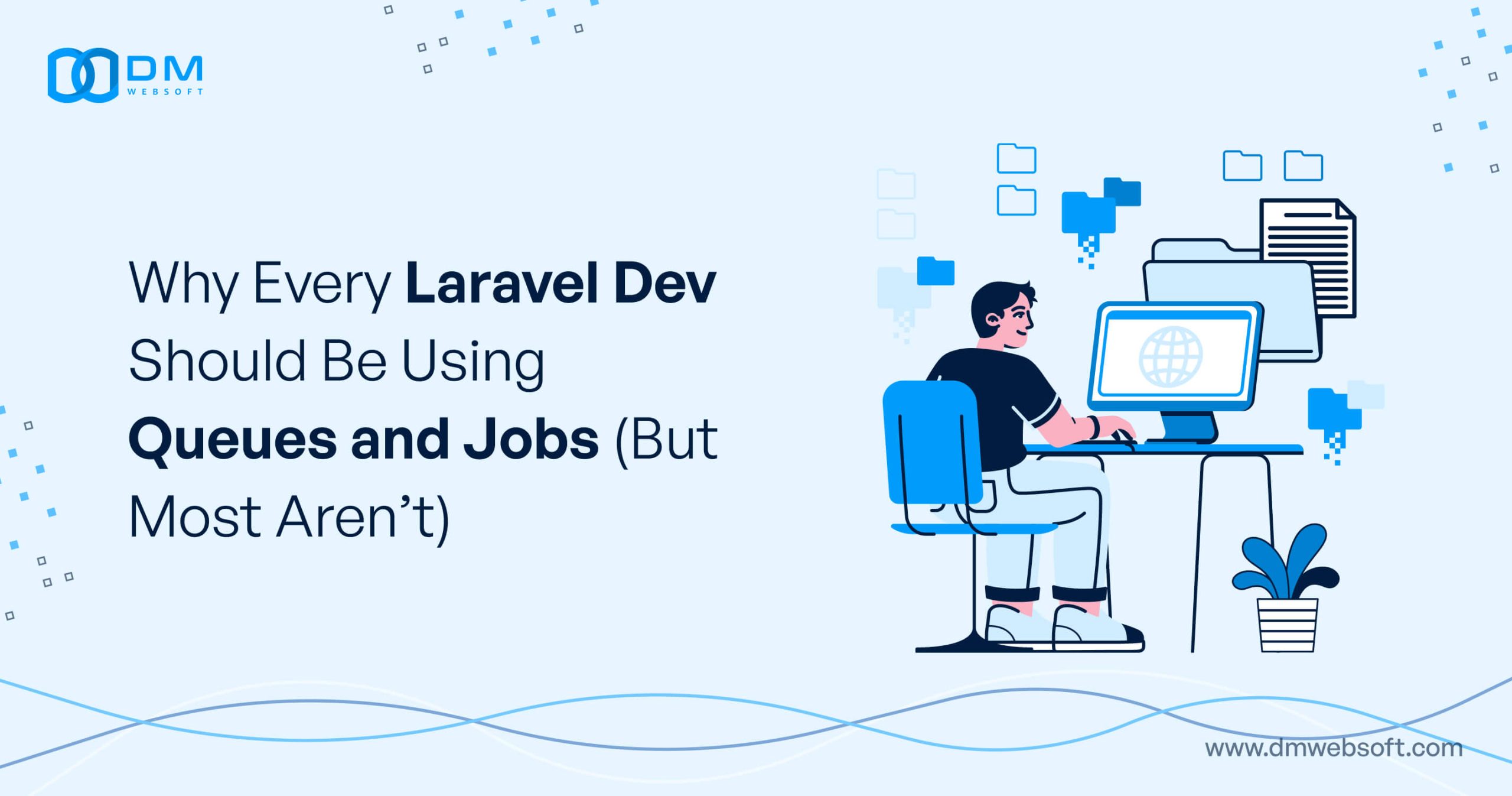DM WebSoft LLP exceeded our expectations! Their seasoned team of experts delivered a website that perfectly captures our brand essence. Their 15+ years of experience truly shine through in their exceptional web development skills.
API Versioning Strategies: How to Manage Changes Effectively

Introduction

Being a tech enthusiast, I’ve watched the entrance of APIs into that rapidly changing world of software development, springing them alive. They are the backbone of modern applications, enabling flawless interactivity and the exchange of data between different systems. When these APIs start to evolve with the new requirements and introduce new features, the focus will now shift to how to handle these changes. This is where API versioning becomes important. Strong API versioning will enable the developers to introduce their updates, improvements in the back-end without shaking the current services, which will be really seamless to the users.
It is therefore the versioning that supplies backward compatibility in APIs, meaning an old version may exist with newer versions. All of this is done to minimize the disruption for the users and keep it in a structured way to handle the changes in the gradual process of change over time or related period. Now, just imagine an application that you use, a change in the back end API; it will go unnoticed, unnotified to you before it takes place. It can make your application go wild, having you to be in a situation of frustrated, losing your productive time or even incurring losses due to it. An API properly versioned never allows such things to happen; it assures faithful following of an API—stable and safe.
There are quite a number of approaches to API versioning from which developers can get to choose. All of them have their distinct pros and cons. The right strategy to be picked is going to be dependent on the given needs of the project and the nature of the changes coming. Some common strategies or methods include URI versioning, header versioning, query parameter versioning, and content negotiation. All these methods call for an understanding of the implication in its implementation.
DM WebSoft LLP is one iconic place where one finds all-in-one solutions for the management of APIs in respect of the clients’ needs. Our experts make sure that your APIs are strong, flexible, and future-proof for scaling. Let’s make your APIs strong with the clear knowledge we hold in implementing the best API versioning best practices and that will help you transition seamlessly with the least disruptions to users. Irrespective of whether you wish to update your current API or introduce a new one, DM WebSoft LLP will help you navigate through the complexities of API versioning.
Understanding API Versioning

Modern software development has brought with it the other side of API versioning—something that provides a structured way of managing changes and updates to APIs. With such a facility, developers can introduce new developments and improvements without causing any service disruptions to an already existing service or relating to multiple versions of an API. That means backward compatibility is maintained and this is what allows the smooth running of applications that depend on the previous versions of APIs.
What Do You Mean by API Versioning
API versioning is the process of creating various API versions to maintain change management in the long term. It means evolving the APIs by updating the API without breaking applications that depended on the previous version. This is pertinent to the process of reducing disturbance and ensuring seamless user experience.
Successful versions of APIs allow developers to provide new and improved versions containing bug fixes and the introduction of new features, while allowing systems that rely on those APIs with older versions to continue their operations. This becomes particularly important when the APIs are used by two or more applications or services. Not versioned, any minor update can cause massive issues: dissatisfaction of the users and maybe even some financial losses.
Significance of API Changes
Effective API change management is essential and important in the following:
- User Experience: Guarantees that users are not interfered with while working with any of the updates.
- Backwards compatibility: It still supports functionality for applications that have depended on specific older API versions.
- Stability and Reliability: This means that there is an ecosystem where APIs are stable and reliable, hence guaranteeing long-term success.
For example, a popular application that fetched user data when the API changes without proper versioning breaks the application and annoys the users. This is where the proper ways of API versioning come in handy, where new versions are seamlessly rolled out while the older ones continue to exist.
API Versioning Strategies
There are a number of common API versioning methods across which developers can manage their changes:
URI Versioning
- Description: Specifies the version number within the URI (for example, /v1/resource).
- Benefits: It is simple, clear, and easy for implementation.
- It will make the endpoints redundant and result in URI sprawl.
Create Header Versioning
- Description : Indicates the version number of requests displayed within a header.
- Benefits: It can make URIs clean and reduce duplication of data.
- Challenges: Requires additional setup and documentation.
Query parameter versioning
- Description: A query parameter for version specification. Ex: v=1.
- Benefits: flexible and easy to adopt.
- Issues: Can mess up the query string.
Content Negotiation
- Description: Ask for API version via Accept header.
- Benefits: Enables super strong version control.
- Implementation: More detailed.
At DM WebSoft LLP, we understand the subtlety of dealing with API changes. Our in-house team of professionals lays maximum emphasis on providing very robust, customized API versioning techniques. Use the knowledge gained so that your APIs support reliability today and can foster possible growth in the future. DM WebSoft LLP will be with you as you update or introduce new APIs, helping you handle the challenges of API versioning.
How API Versioning Affects System Performance and User Experience

Good versioning of the API is not so much about managing change; much importance is on the performance of the system and users’ experience. The best effective way for the versioning of the API would be to incorporate changes and make improvements into a system without any sort of adverse effect on the system or user. This section will only try to explore the ways API versioning might have influenced these two areas of importance.
System Performance
Truly, this can make a big difference in performance. Developers handling changes through versioning can fine-tune each version of the API to meet particular performance requirements. This means that whenever new versions are released with improvements and enhancements, they should never compromise the performance of older versions that are still in use.
- Performance Optimization: Version releases make it possible to optimize performance with the latest technologies and methodologies. This way, the API is groomed to be all-time efficient and responsive.
- Load management: This means that the load is managed and disseminated appropriately among the different versions; therefore, no single version will ever become the bottleneck.
- Scalability: Good versioning allows for a system to be scalable so that the system can be scaled according to the increments in demand without performance deterioration.
For instance, an API would be used by several clients, and quite likely, different clients would have different needs and expectations in terms of performance. By supporting different versions of the API, developers could equally provide performance-optimized versions independently for the different clients to ensure that everyone gets the best experience.
User Experience
Another very important area where API versioning plays a role is user accessibility and user experience. The magic in keeping users satisfied and loyal is through a seamless user experience. Proper management of the changes in API will ensure that developers upgrade their APIs without breaking the experience for an end user.
- Consistency: this is what every user expects, and it has to be assured by versioning. It ensures that the change of any particular API is managed with carefulness not to break any of the already existing functions due to new features and improvements.
- Backward Compatibility: Features that maintain backward compatibility are meant to build trust among users who have adopted an API by being able to stay in the older versions and migrate at their convenience to newer ones.
- Reduced Downtime: Through the API versioning technique, the developer can make minimal changes while ensuring minimal downtime with the availability of services continuously.
Think of a popular mobile app that relies on a backend API. If that API were to be updated without some form of effective versioning put in place, users would be catched up with errors or worse, loss of functionality. This puts off users and may result in losing the majority of them. With sensible methods on API versioning, developers are able to introduce new features seamlessly.
The Advantage of DM WebSoft LLP
We, at DM WebSoft LLP, understand the importance of both your system’s performance and a seamless user experience through effective API versioning. We emphasize good practices in such a way that the versioning of the API ensures system performance and maintains the user experience as seamless. Please, through this partnership, be able to leverage the knowledge of effective change management with the APIs so your users can enjoy a reliable and stable service.
It’s those customized API management solutions that echo innovation in answering your customized needs; it ensures the API products developed are standing strong and supporting growth far into the future. May it be the aspect of optimization with the already existing APIs or the rollout with new ones? Allow DM WebSoft LLP to be your shepherd guiding you through API versioning.
Best Practices for API Versioning

API versioning is a strategic concern and should rest squarely in the purview of ground rules and best practices. Developers who follow those best practices allow for smooth transitions among versions of an API, thus ensuring changes do not disrupt users. Here are the key best practices for API versioning so that the change management of an API can be done effectively:.
Clear Documentation
One of the most important aspects of API versioning is clear and detailed documentation. Detailed documentation of every version of the API will help developers understand the changes, how to use new features, and how to migrate from the old to the new version.
- Version Details: Document the specific changes, new features, and deprecated functionalities in each version.
- Usage Examples: Illustrate some common uses of the API, not simply enumerate differences between versions of it.
- Migration Guides: Provide proper guides and tools for developers who desire migration from one version to another without hiccups.
Proper documentation is also vital to ensure that this process is well-defined and allows developers to quickly and effectively adapt to new versions.
Maintaining Backward Compatibility
Backward compatibility is crucial for maintaining user trust and ensuring a smooth user experience. By ensuring that new versions of the API do not break existing applications, developers can provide a stable environment for users.
- Non-Breaking Changes: Make it in a manner which doesn’t break the existing functionalities.
- Fallback Mechanisms: Implement mechanisms that allow the older version to work while encouraging the adoption of new versions.
- Gradual Deprecation: Deprecate over time; phase out old versions with enormous notice and support for developers.
Being backward-compatible is how you build an API ecosystem that is reliable enough for people to trust in your services without interruptions.
Automated Testing
Through automated testing, a new release of the API neither introduces new bugs nor breaks the existing functionality. Automated tests help developers identify and solve problems fast, because they are part of the development workflow.
- Regression Testing: Ensure that new changes to a system will not adversely influence existing functionalities.
- Version-Specific Tests: Write tests against the version of the API and cross-verify whether the functionalities are working as required.
- Continuous Integration: Automated tests should be included in the CI/CD pipeline to detect problems as early as possible in the development process.
Automated testing should give us the confidence that the changes, in some sense, have become robust and do not bring about unexpected problems.
Deprecation Policy
A deprecation policy needs to be clear so that managing the lifecycle of different versions of APIs is clear. This policy should clearly define how and when older versions phase out and a clear timeline is given to the users.
- Deprecation Notices: Deprecation notices should be given way before the feature is removed.
- Support Schedule: This specifies the period for which support for old versions is guaranteed and the type of support that is offered.
- Transition Assistance: Give them those tools and be their guide in how they can smoothly transition to new product versions.
With a proper deprecation policy in place, the user remains aware of changes and can plan their transitions.
The DM WebSoft LLP Approach
Here are some of our best practices in the league that we follow at DM WebSoft LLP while effecting API versioning for our clients: our extensive documentation, commitment to backward compatibility, automated rigorous testing, deprecation policies—all this brings you the very latest in robust and reliable API solutions. Implement best practices with regard to API versioning to leverage our expertise in improving performance, sustaining seamless user experiences, and ensuring future growth support.
Technologies and Tools for API Versioning

Full-blown, better API versioning practices need to be implemented fully, and sometimes only using the aid of tools and technologies to smoothen the process by maintaining consistency. Let us discuss a few popular tools and technologies that can be extremely handy to help developers manage versioning of APIs effectively.
Popular Tools for API Versioning
OpenAPI Swagger
- Description: Swagger is a dominant API development framework that wraps support and management for the whole lifecycle of an API starting from the design phase. It allows developers to design, build, document, and consume RESTful APIs.
- Core features: Include automated documentation, an interactive API explorer, and multi-language support.
- Advantages: makes development teams better at collaboration, transparent API documentation, easy versioning, easy updates.
Postman
- Description: Postman is an API development tool that is used for testing, documentation, and monitoring of APIs. Also, it has support for controlling various versions.
- Features: API testing, automated tests, monitoring, and documentation.
- Benefits: It enables thorough testing of different versions of APIs, maintains quality and reliability, and provides a simple interface that any user can use to manage API changes.
API Gateway
Definition: An API Gateway is a reverse proxy that accepts all the application programming interface (API) calls, performs the orchestration of the various services required to deliver on that request, and replies with the appropriate result. Some of the tools supporting help in versioning include AWS API Gateway, Kong, and Apigee. Other features include traffic management, authorization, monitoring, and versioning. Other advantages include simple multiple-version API management, enhanced performance, and better security.
Git Version Control
- Description: Git is a distributed version control system that allows developers to track changes in the code base. It helps manage different versions of an API by keeping a branch for each version.
- Features present: branching, merging, version history, and collaboration.
- Advantages: Robust way to handle changes of code, allows for collaboration, and ensures that the previous version states are preserved.
Technologies for API Versioning
GraphQL
- Definition: GraphQL is an application programming interface query language and runtime that executes those queries using a type system that you design for your data. Thus, it gives the possibility to the clients to request exactly what they need, making versioning easier.
- Features: Very precise fetching of data, strong type, and a self-documenting API.
- Benefits: It minimizes over-fetching and under-fetching of data, simplifies the process of evolving APIs, and facilitates flexible versioning.
Docker
- Explanation: Docker is a tool that helps to package up any application in a portable and lightweight container with an automatic deployment mechanism. This is very helpful in versioning different APIs.
- Features: Containerization, Portability, Microservices.
- Advantages: makes deployment of several versions of the API very easy, enhances scalability, and isolates versions in a better way.
CI/CD Pipelines (Continuous Integration/Continuous Deployment)
- Description: CI/CD pipelines automate the process of code integration, testing, and deployment. Some of the tools available in the market are Jenkins, Travis CI, and CircleCI that support API versioning through the automation of testing and deployment of different versions. Features include automated builds, tests and deployments.
- Benefits: This makes sure that API changes are well-tested and released properly, minimizes the possibility of errors, and accelerates the process of development.
The DM WebSoft LLP Advantage
We leverage these tools and technologies to develop strong API versioning techniques, which ensure an uninterrupted transition between versions without disturbing the least. Our skillful team of professionals are well-versed in employing API management solutions like Swagger, Postman, and API Gateways in order to provide full support to our customers. We bring in the best practices in software development to make your APIs reliable, scalable, and growth-supporting.
Partnering with DM WebSoft LLP brings with it our vast experience and expertise within the field of API management. Our custom solutions, either with new APIs or API updates for the existing ones, are taken care of to very specific needs so as to improve performance and the user experience.
A Versioning Future Trend with APIs
API versioning, therefore, copes with a change in technology that is fast increasing, and competitiveness can still be held if developers and businesses continue to be updated with such trends. This part gets into discussion on some of the API versioning trends and walks through how the future of API management is going to be shaped.
API Management Supercharged with AI
API management platforms are increasingly incorporating elements of AI and ML. The same could be automated in multiple dimensions of versioning pertaining to APIs, making it relatively much more efficient and reducing error.
- Automatic Updating of Documentation: Ensures that API documentation is always current and accurate across all versions.
- Predictive Maintenance: ML algorithms can predict issues with releases and recommend preventative actions to prevent such scenarios.
- Smart Routing: AI-based systems dynamically route API requests to the correct version, sensitive to user behavior.
This strategy for versioning APIs is where businesses can apply AI and ML techniques to enhance API reliability.
Microservices and Their Relation to API Version
The microservices architecture empowers developers to create and manage APIs in ways not done before. Microservices open up a way of having applications broken down into small, composable services with independent builds, deployments, and versioning.
- Granular Versioning: Each microservice can have its versioning strategy, allowing more control over API changes.
- Isolation: Modifications to one microservice do not impact others, minimizing disruptions.
- Scalability: Easily scales individual components, improving overall system performance.
This approach offers more portability and efficiency in dealing with API versioning.
Cloud-Native APIs
Another feature to consider is implementing API versioning in modern API development with cloud-native technologies. This approach leverages scalability, reliability, and security.
- Serverless Architecture: Platforms like AWS Lambda and Azure Functions allow developers to deploy and manage APIs without underlying infrastructure concerns, simplifying versioning and reducing operational overhead.
- Containerization: Tools like Docker and Kubernetes deploy APIs in isolated containers, simplifying multi-version management.
- Continuous Integration/Continuous Deployment: Fully implemented CI/CD pipelines with native cloud technologies ensure effective testing and deployment of API changes.
Cloud-native approaches improve existing practices in API versioning and governance.
More Secure Features
As businesses turn to APIs more and more to perform their functions, the need for security regarding the same becomes critical. That can be noticed in one of the gradients the security of APIs is currently making efforts on—making the said APIs include more advanced features that make them immune to vulnerability and unpermitted access.
- OAuth 2.0 and OpenID Connect: Powerful tools for securing the mechanism of access to APIs and the management of authentications.
- API Gateways: Advanced features of modern API gateways include functionalities such as rate limiting, threat detection, and encryption.
- Zero Trust Security: Defend against a myriad of threats through the implementation of Zero Trust principles for both API request authentication and authorization.
Such integration of high-level security attributes will without a doubt boost the confidence of protection for their APIs, also ensuring integrity with various versions.
Benefits of DM WebSoft LLP
At DM WebSoft LLP, we always adopt these emerging trends in delivering next-gen solutions to manage APIs to the advantage of our clients. In our team, we develop techniques in the versioning of APIs with the new architecture of microservices and cloud-nativeness, coupled with AI-driven enhanced security measures. Team up with us today to ensure your APIs are secure, scalable, and ready for the future with innovation.
API versioning involves managing multiple versions of an API to ensure backward compatibility and minimize disruptions when updates or changes are introduced. It’s crucial for maintaining a stable user experience and preventing application breakages.
Common strategies include URI versioning, header versioning, query parameter versioning, and content negotiation. Each method has its advantages and challenges, and the choice depends on specific project requirements.
Effective API versioning allows for optimization and scalability, ensuring that newer versions enhance performance without compromising older versions. It helps distribute the load and maintain system stability.
Best practices include clear documentation, maintaining backward compatibility, automated testing, and a well-defined deprecation policy. These practices ensure smooth transitions and minimize disruptions.
DM WebSoft LLP follows a comprehensive approach, including thorough planning, robust development, rigorous testing, seamless deployment, and ongoing maintenance. Our tailored solutions ensure that APIs remain reliable and scalable, supporting future growth.
Get Started Now !
What’s the Process ?
Request a Call
Consultation Meeting
Crafting a Tailored Proposal
Get Started Now !
Real Stories, Real Results. Discover What Our Clients Say

Working with DM WebSoft LLP was a game-changer for our business. Their technical prowess and innovative solutions transformed our online presence. A highly recommended web development agency with a stellar track record.

We are thrilled with the results DM WebSoft LLP delivered. Their deep understanding of web development coupled with years of expertise ensured a seamless and visually stunning website. True professionals!

In a digital age where first impressions matter, DM WebSoft LLP crafted a website that speaks volumes. The team’s attention to detail and commitment to quality set them apart. Thank you for making our vision a reality.

DM WebSoft LLP’s team demonstrated unparalleled expertise. Their ability to navigate complex technical challenges with ease is truly commendable. Choosing them for our web development needs was the best decision.

Exceptional service, unmatched skills! DM WebSoft LLP stands out as a leading web development agency. Their collaborative approach and commitment to excellence make them our go-to partner for all things web-related.

DM WebSoft LLP turned our ideas into a digital masterpiece. The seamless communication and timely delivery of our project showcased their professionalism. Highly impressed with the level of creativity and skill.

Our experience with DM WebSoft LLP was nothing short of amazing. From concept to execution, their team provided top-notch web development services. A reliable partner for businesses looking to elevate their online presence.

DM WebSoft LLP’s team of tech experts is second to none. Their wealth of experience reflects in the quality of their work. Our website not only meets but exceeds industry standards, thanks to their dedication.

Choosing DM WebSoft LLP was the best investment for our web development needs. Their team’s proficiency, coupled with a customer-centric approach, made the entire process smooth and enjoyable. A pleasure to work with!





